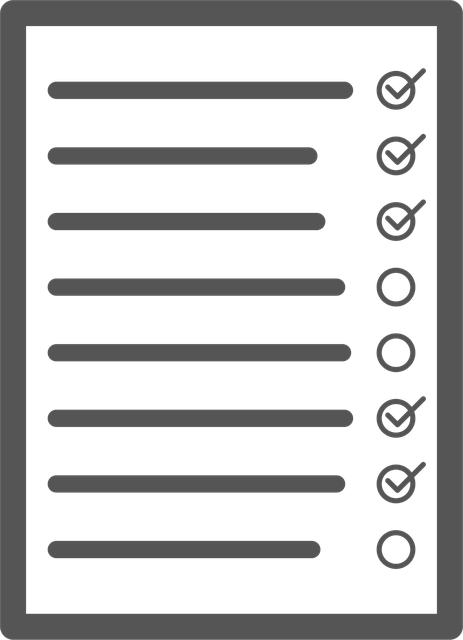Unplanned IT downtime damages business operations and revenue. Implementing routine system checks as part of proactive maintenance reduces such disruptions by identifying issues early. This involves automated monitoring, regular updates, patching, and network defragmentation. Case studies show successful implementations in e-commerce and finance sectors, enhancing performance and reliability. Routine system checks are essential for minimizing downtime and maximizing firm efficiency through IT services.
In today’s digital landscape, minimizing downtime is paramount for business success. Scheduled and preventive IT services offer a powerful solution, significantly reducing unexpected disruptions and their costly consequences. This article explores how organizations can optimize operations through strategic initiatives like understanding downtime costs, implementing essential routine system checks, leveraging automated monitoring, adopting proactive maintenance schedules, and staying efficient with regular updates and patching. We also present inspiring case studies to highlight the transformative impact of these preventive measures.
- Understanding Downtime Costs and Benefits of Prevention
- Implementing Routine System Checks: Essential Components
- Automated Monitoring for Real-Time Issue Detection
- Proactive Maintenance: Scheduling for Minimal Disruption
- Optimizing Efficiency Through Regular Updates and Patching
- Case Studies: Successful IT Preventive Measures in Action
Understanding Downtime Costs and Benefits of Prevention

Downtime can significantly impact a business’s bottom line and productivity levels. When IT systems fail or become unresponsive, operations grind to a halt, leading to lost revenue, decreased efficiency, and frustrated clients or employees. Understanding the true cost of downtime is the first step towards implementing effective prevention strategies. By recognizing that every minute of unscheduled downtime translates into potential financial losses, businesses can justify investing in proactive IT solutions.
Preventive measures like routine system checks and tech upkeep schedules are essential components of a robust IT strategy. Proactive support from CPA hardware health experts ensures that systems run at optimal levels, minimizing the risk of unexpected failures. These scheduled services not only reduce downtime but also enhance overall efficiency, allowing businesses to focus on their core objectives without constant interruptions.
Implementing Routine System Checks: Essential Components

Implementing routine system checks is a cornerstone of any robust IT strategy aimed at reducing downtime and boosting efficiency. These regular assessments go beyond mere diagnostics; they serve as proactive tech upkeep schedules, enabling IT teams to identify potential issues before they escalate into costly disruptions. By integrating sophisticated uptime enhancement tools into established IT maintenance contracts, organizations can ensure their systems operate at peak performance, minimizing the risk of unscheduled downtime.
Such checks encompass a wide range of essential components, from monitoring server health and network connectivity to scanning for malware and patching security vulnerabilities. Proactive tech upkeep schedules not only protect against unexpected failures but also contribute to data integrity and system stability. By leveraging IT maintenance contracts that prioritize these routine system checks, businesses can foster an environment where efficiency flourishes and operational resilience becomes the norm rather than the exception.
Automated Monitoring for Real-Time Issue Detection

Automated Monitoring for Real-Time Issue Detection is a cornerstone of modern IT service delivery. By leveraging sophisticated algorithms and tools, this technology continuously scrutinizes system performance, identifying potential issues before they escalate into downtime. Through regular routine system checks, automated monitoring systems can detect anomalies in CPU usage, memory leaks, disk space exhaustion, and network latency, among other parameters. This proactive approach allows for swift corrective actions, ensuring optimal hardware health and maximizing firm efficiency IT operations.
Moreover, automated monitoring provides valuable insights into system optimization opportunities. By analyzing performance metrics over time, these systems can identify trends and bottlenecks, enabling IT teams to implement strategic interventions that enhance overall system performance. As a result, organizations can achieve better resource utilization, improved network responsiveness, and reduced risks of unexpected outages, thereby further reinforcing their commitment to maintaining high levels of operational integrity.
Proactive Maintenance: Scheduling for Minimal Disruption

Proactive maintenance is a game-changer when it comes to minimizing downtime and maximizing firm efficiency IT. By implementing regular routine system checks, tech upkeep schedules can be optimized, ensuring that potential issues are identified and resolved before they cause disruptions. This strategy involves scheduling preventive measures such as software updates, hardware upgrades, and performance monitoring, all designed to keep systems running smoothly.
A well-structured tech upkeep schedule allows for efficient system optimization, reducing the risk of unexpected failures. It enables IT teams to stay ahead of potential problems, leading to increased productivity and minimal service disruptions. These routine checks not only help in maintaining optimal performance but also provide valuable insights into system behavior, allowing for data-driven decisions that further enhance overall efficiency.
Optimizing Efficiency Through Regular Updates and Patching

Regular updates and patching are essential components of optimizing firm efficiency through IT services. By conducting routine system checks and applying the latest patches, organizations can mitigate security vulnerabilities and ensure their systems run smoothly. Proactive support from qualified IT professionals helps in managing these updates efficiently, minimizing disruptions to daily operations.
Moreover, network defragmentation as part of these regular maintenance routines enhances overall performance. This process optimizes data storage and retrieval, leading to quicker response times for applications and improved user experience. Such proactive measures not only reduce downtime but also contribute significantly to the overall efficiency of IT infrastructure, ultimately boosting the productivity of the entire organization.
Case Studies: Successful IT Preventive Measures in Action

In the realm of IT management, proactive measures are often overlooked but play a pivotal role in ensuring smooth operations and minimizing disruptions. Case studies from various industries highlight the success of implementing regular routine system checks as part of their preventive IT services. For instance, a leading e-commerce company adopted a proactive approach by scheduling daily desktop cleanup routines, which not only improved system performance but also reduced the occurrence of sudden crashes during peak shopping hours. This simple yet effective strategy demonstrated that even minor maintenance tasks can have significant impacts on overall efficiency.
Another compelling example involves a financial institution that signed an IT maintenance contract with a focus on CPA hardware health monitoring. By leveraging advanced diagnostic tools, they were able to predict and prevent potential hardware failures before they caused downtime. This proactive approach resulted in improved system reliability and enabled the organization to avoid costly emergency repairs. These real-world applications underscore the value of preventive IT services in reducing unexpected outages and enhancing operational resilience.
